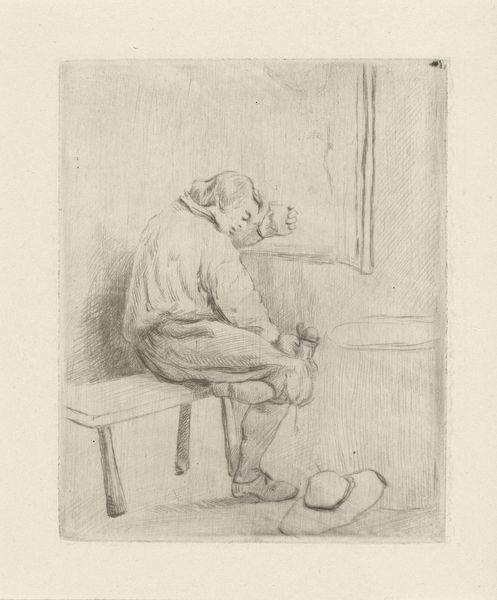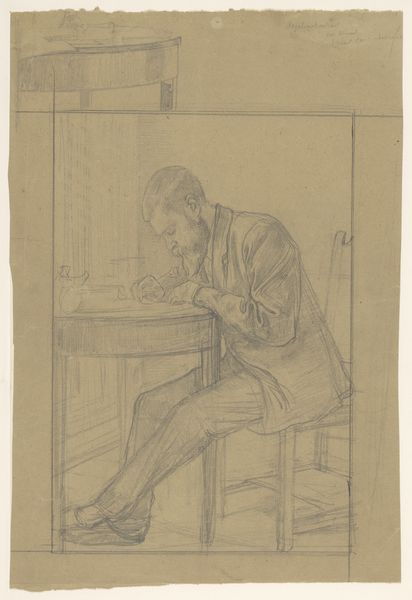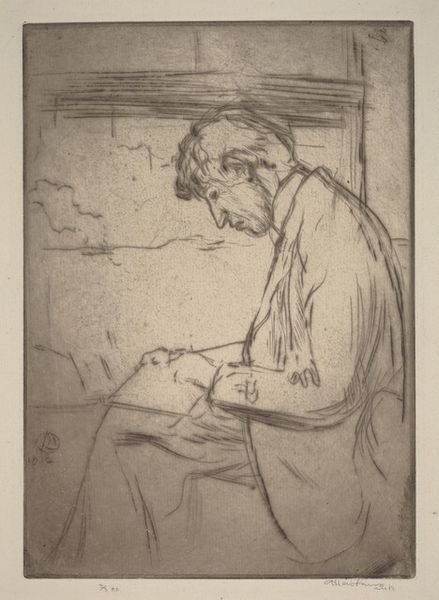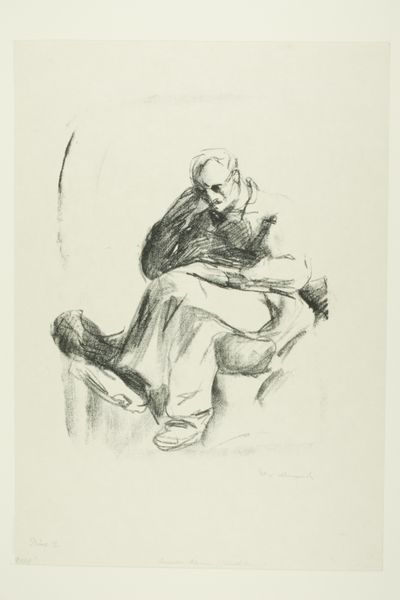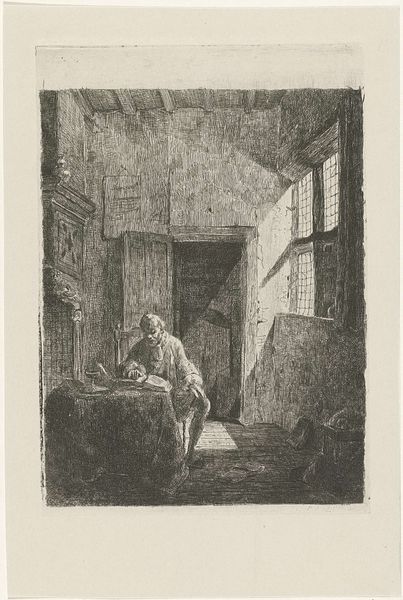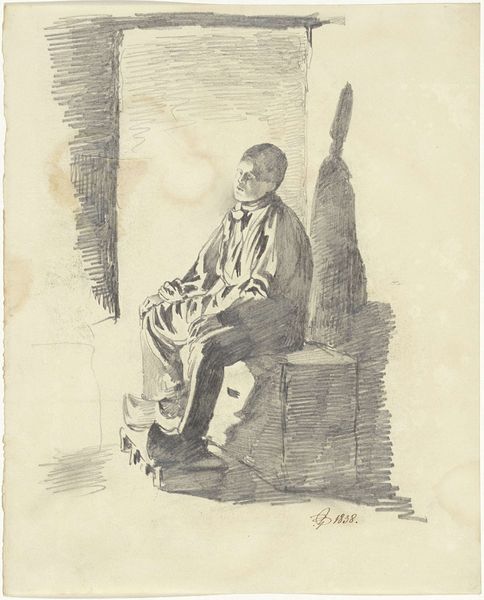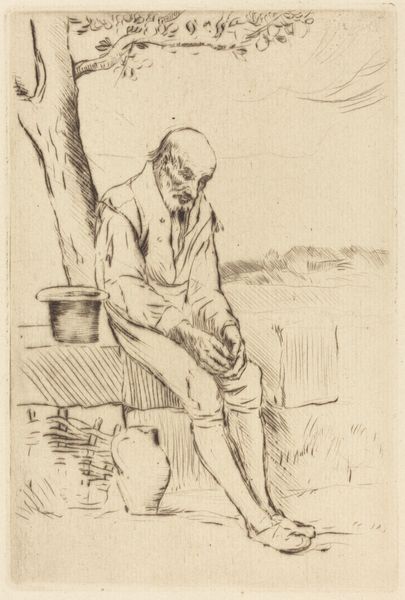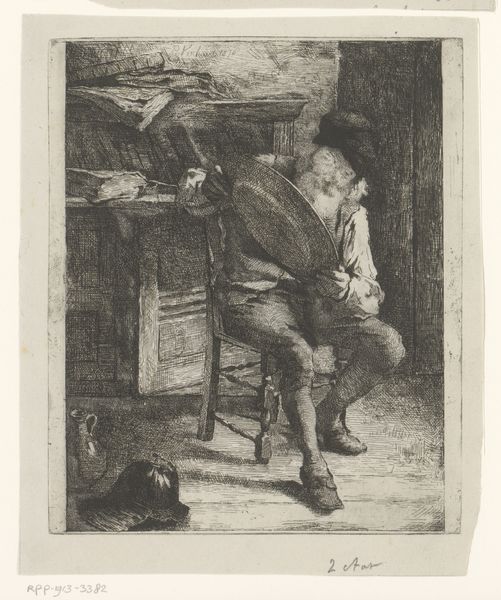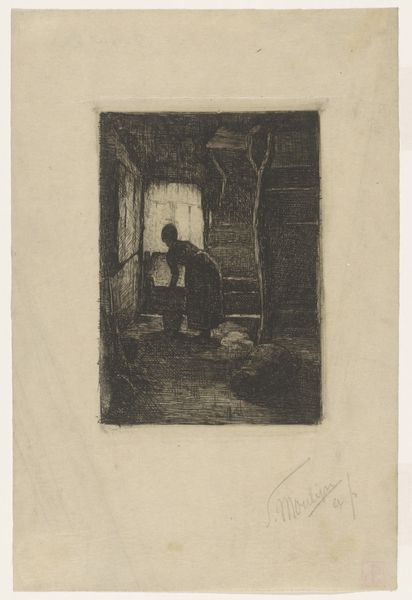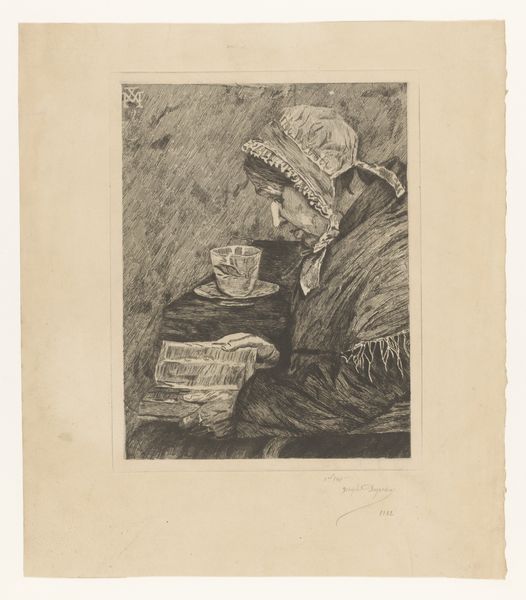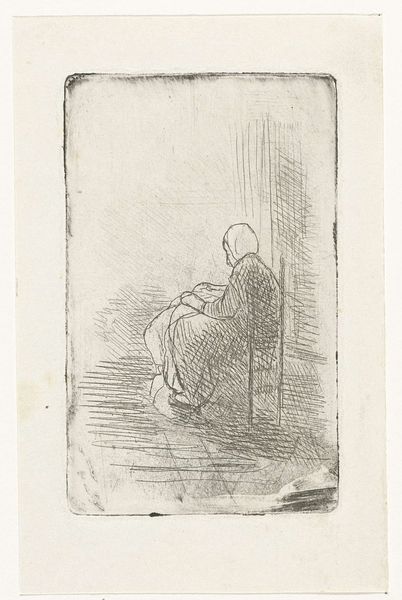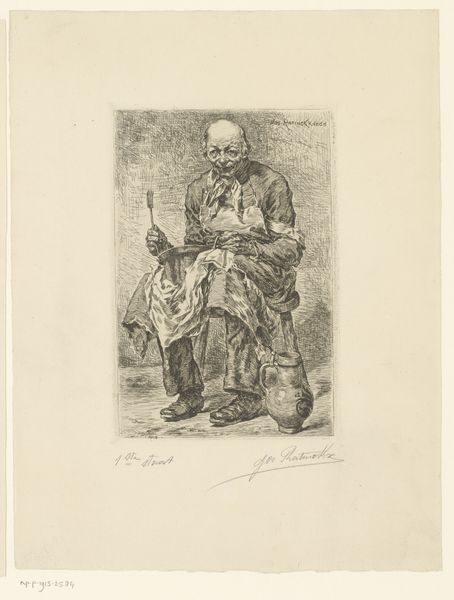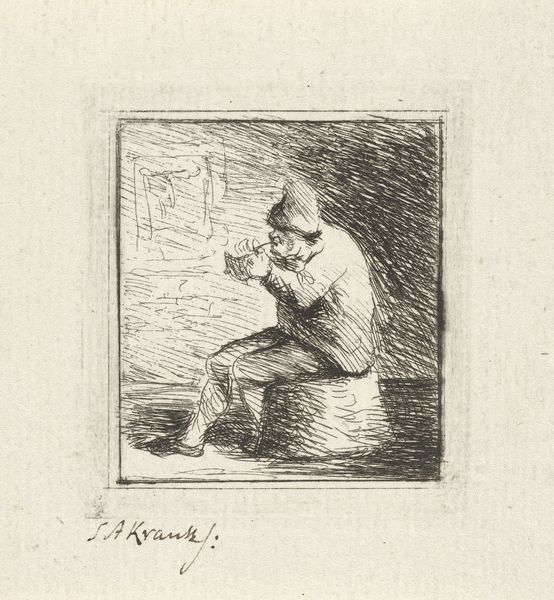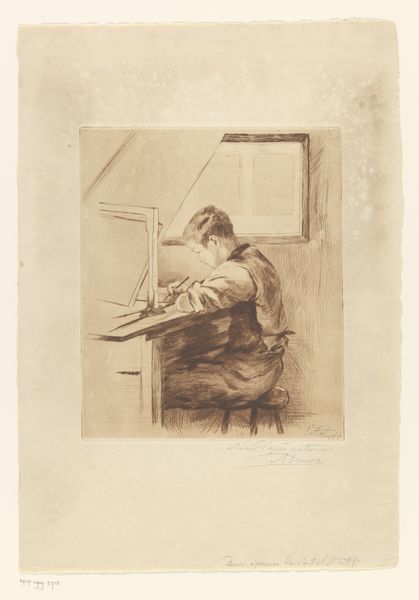
drawing, print, paper, engraving
#
portrait
#
drawing
#
16_19th-century
#
dutch-golden-age
# print
#
impressionism
#
paper
#
genre-painting
#
engraving
#
realism
Dimensions: 404 × 278 mm (plate); 500 × 320 mm (sheet)
Copyright: Public Domain
Editor: So, this is "The Smoker," an 1882 engraving by Jozef Israëls. The man is so isolated. I’m struck by the quiet desperation it conveys. What symbols stand out to you in this work? Curator: The pipe itself is a potent symbol, of course. Beyond its literal function, what does it *mean* here, within the context of 19th-century Dutch society? Editor: Hmm. Perhaps a form of escapism or solace? Curator: Exactly. Tobacco often represents contemplation, even a kind of melancholy. But notice *where* he is smoking. It is within the intimate interior of the hearth. How might the open flames impact this setting? Editor: Is the open hearth another layer of meaning? Curator: Yes! Hearth as a sacred, ritual space for reflection. This is where generational memories are formed, stories are told, culture is preserved and handed down, but in this case the mood feels more isolated and forlorn. Observe his placement next to the flames. Are these the passions he still longs to feel, but they remain out of reach? What do *you* sense? Editor: I feel his intense weariness now that you mention it! He’s right beside the hearth, and this shows a link to stories told, but it is inaccessible. Like the figure is separated. It brings such sorrow to the scene. Curator: And this interpretation provides insight to your understanding of the work and to its universal accessibility. We both took meaning and can apply it to any of our understandings of loss. Editor: Seeing how these images can embody those deeply personal experiences. Thank you for unlocking its significance!
Comments
No comments
Be the first to comment and join the conversation on the ultimate creative platform.
